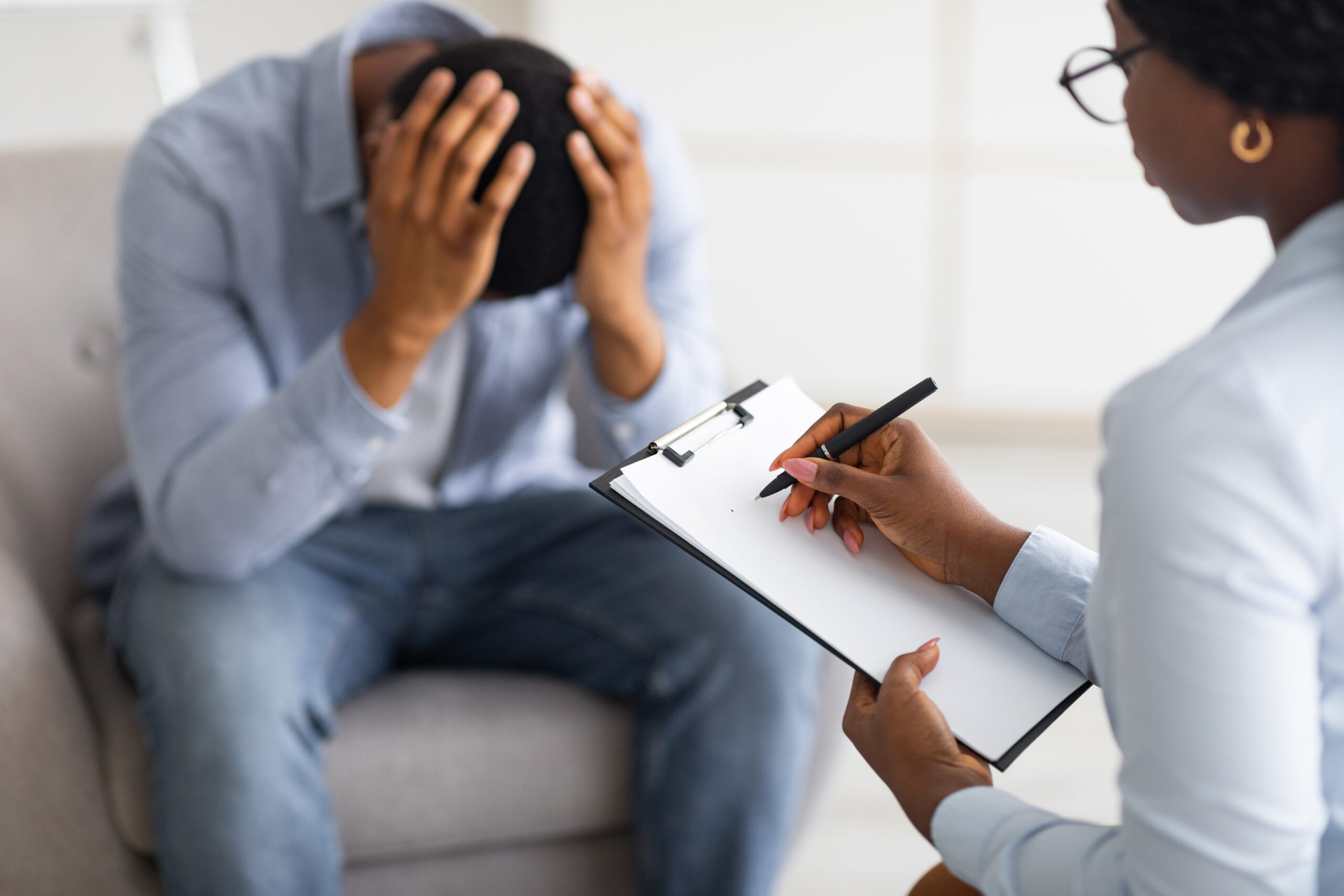
Major depression, not just periodic moments of feeling blue, is considered one of the most common mental disorders, according to the National Institute of Mental Health (NIMH). The agency refers to the Diagnostic and Statistical Manual of Mental Disorders definition of this level of depression, which is: “A period of two weeks or longer during which there is either depressed mood or loss of interest or pleasure, and at least four other symptoms that reflect a change in functioning, such as problems with sleep, eating, energy, concentration, self-image, or recurrent thoughts of death or suicide.”
Depression creates a dysregulation, or impairment, of neurotransmitters—brain chemicals that affect emotions and moods. There are a number of causes for depression, including genetic predisposition, trauma, stress, hormone imbalance, or mood-altering substances. It’s not uncommon for depression to be a co-occurring disorder to alcohol and drug addiction.
When presenting statistics, NIMH doesn’t exclude a major depressive episode caused by “medical illness, bereavement, or substance use disorders.” Data from 2016 indicates:
- Approximately 10.3 million adults over 18 in the U.S. had “at least one major depressive episode with severe impairment.” Roughly 64 percent of all depressive episodes were severe. Roughly 3 million adolescents under 17 in the U.S. had “at least one major depressive episode with severe impairment.” An estimated 70 percent of all depressive episodes were severe.
- Adult females suffer major depressive episodes nearly twice as much as adult men. Adolescent females have three times more episodes than their male counterparts.
- The prevalence for major depression in adults aged 18-24 is 10.9 percent; 25-49 is 7.4 percent; and people 50 and older at 4.8 percent. For adolescents aged 12-17, the prevalence is 12.8 percent.
Both adults and adolescents experiencing major depressive episodes are higher among those identifying with two or more races.
What continues to be a problem is nearly 40 percent of adults and 60 percent of adolescents who experience major depression don’t receive treatment for it.
Symptoms of depression include, but aren’t limited to:
- Agitation, irritability, or anger
- An inability to function optimally in daily life
- Changes in appetite and sleep patterns
- Concentration difficulties
- Excessive guilt or self-hate
- Extreme sadness, including feelings of helplessness or hopelessness
- Insomnia
- Isolation or increasing withdrawal from people and activities
- Lethargy or fatigue
- Thoughts of suicide
Mental Health America offers a screening to help identify symptoms.
Major depression isn’t the only type of this disorder. You or someone you love may also experience other serious conditions such as:
- Dysthymia causes a low mood over an extended amount of time—sometimes a year or more. An individual can function, but barely. This condition includes many of the symptoms listed above.
- Postpartum depression, commonly associated with low moods after giving birth, is also revealed by many of the symptoms above. Roughly 85 percent of mothers experience it within weeks or months after having a baby, but 16 percent develop more serious symptoms, such as disconnection from children or worse, thoughts of harming them.
- Seasonal Affective Disorder, or SAD, is often referred to as seasonal or winter depression. If you’re struggling with substance abuse or in recovery, this condition may affect you more if you have a biological relative with a depressive disorder but you have yet to be diagnosed. Symptoms are more severe during winter, but ebb slightly with the onset of spring.
- Atypical depression, which some researchers consider to be frequently undiagnosed, often presents with overeating and sleeping too much, as well as irritability and relationship issues.
- Psychotic depression, in extreme cases, results in someone’s inability to communicate, rise from bed, and distinguish reality from false beliefs. Some major depressive episodes when left untreated may become this severe—the National Alliance on Mental Illness reports this happens for about 20 percent of depression sufferers.
How Inpatient Therapy May Help Depression
When it comes to depression, it’s easy to think someone can simply “snap out of it” or that he or she is lazy, craving attention, or being manipulative. This isn’t true.
If you or a loved one experiences bouts with serious depression, it might be time to consider inpatient therapy to manage the condition effectively. Residential treatment often fosters a comforting atmosphere to start addressing the type of condition and what therapies might be necessary to reach stability. Methods might include:
- Non-habit forming medication to help recalibrate and regulate neurotransmitters
- Individual and group talk therapy to address attitudinal and behavioral aspects of clinical depression and develop coping strategies for managing emotions and thoughts
- Cognitive behavioral therapy, which helps people identify and process irrational or unhealthy patterns that prompt continual pain
- Applications such as Eye Movement Desensitization and Reprocessing (EMDR), grief groups, and trauma-specific therapy for conditions like grief, trauma, and post-traumatic stress that contribute to depression
- Brain and physical exercises to restore new cerebral tissue and release positive chemicals
- Nutritional plans that eliminate toxins and help restore a balance of vitamins, minerals, and amino acids
During an inpatient stay, residents can rely on 24/7 support and a structure that allows for the only focus to be on healing. This approach often clears the way for establishing regular mechanisms for managing the condition, developing a continuum of care plan, and finding professionals and other groups for assistance after treatment.
After an inpatient stay, individuals can work with their care providers to determine what other coping measures can be part of daily life that help keep the phantom of depression at bay.
Everyday Health provides a comprehensive checklist to review when considering inpatient depression facilities.
Depression Care at Cottonwood Tucson
The professionals at Cottonwood Tucson have a multi-faceted individual approach to residential depression treatment that includes everything from cognitive behavioral therapy to proper nutrition plans. Find out how we can help you.
If you or someone you love is in need of immediate support because of the potential for self-harm, please call the National Suicide Prevention Lifeline at 1-800-273-8255. This help is free and confidential.
By Tracey L. Kelley







